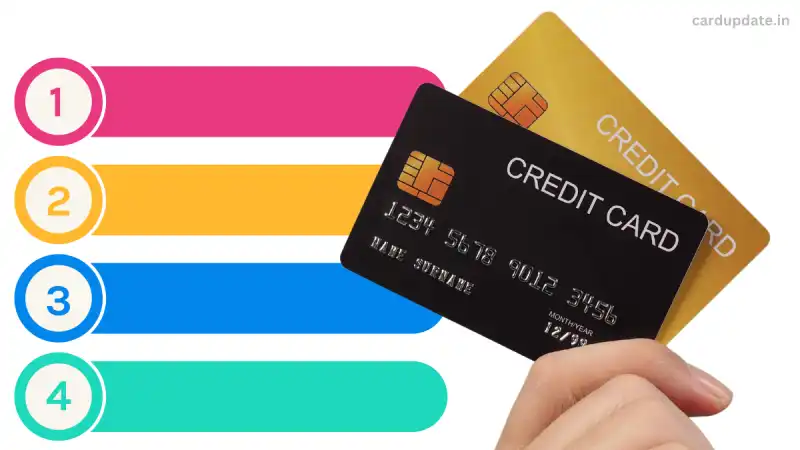
Have you ever found yourself trapped in a cycle of credit card debt, struggling to keep up with high-interest payments?
Enter the balance transfer credit card – a financial lifeline that offers hope for those seeking relief from hefty interest charges.
Simply put, a balance transfer credit card allows you to move your existing credit card debt to a new card, often at a much lower interest rate.
It’s like hitting the reset button on your finances, offering the chance to save money and pay off debt faster. But is it really a good idea?
what are balance transfer credit card?
A balance transfer credit card is a financial tool that allows you to transfer existing credit card debt to a new card, typically at a lower interest rate.
This process can save you money on interest charges and potentially help you pay off your debt faster.
Here is how it works
- Apply for a balance transfer credit card offering a 0% introductory APR on balance transfers, usually for a period of 6 to 18 months.
- Once approved, initiate a balance transfer from your old credit card to the new one. There’s usually a transfer fee, typically ranging from 3% to 5% of the amount transferred.
- Make monthly payments on the transferred balance during the introductory APR period, aiming to pay off the entire balance before the intro period ends.
Benefits of using a balance transfer credit card include saving money on interest, consolidating debt into one payment for easier management, and potentially paying off debt faster.
Are balance transfer credit card worth it?
Balance transfer credit cards can be an effective tool for managing debt in India, but it’s essential to assess if they align with your financial goals. Here’s an organized breakdown of the pros and cons to aid your decision-making process:
Pros:
Reduced Interest: Indian credit card debt often accrues high-interest rates. Balance transfer cards offer introductory periods featuring 0% or significantly lower interest rates, leading to substantial savings on interest charges.
Debt Consolidation: Simplify the management of multiple credit card debts with varying interest rates by consolidating them into a single card with a lower rate. This streamlines tracking and payments, making debt management more efficient.
Potential for Faster Repayment: With lower interest rates, more funds become available in your budget to allocate towards debt repayment, potentially accelerating the payoff process.
Cons:
Balance Transfer Fee: Indian banks commonly levy a balance transfer fee, typically ranging from 3% to 5% of the transferred amount. This fee can offset some of the interest savings, particularly if the transferred balance is not substantial.
Introductory Period Limitations: The 0% interest period is usually introductory, often lasting between 6 to 18 months. It’s crucial to formulate a repayment plan to clear the balance before the regular APR, which might be higher than your original card’s rate, takes effect.
Temptation to Overspend: Avoid the temptation to use the new card for additional purchases. Balances from fresh transactions will be subject to regular interest rates, nullifying the benefits of the transfer and potentially worsening your financial situation.

List of Best credit card for balance transfer in India
Here are some of the best credit cards for balance transfers in India along with their key features:
1. SBI Card Elite
- Offers a 0% introductory APR on balance transfers for up to 12 months.
- Relatively low balance transfer fee of 3%.
- Provides reward points on spending, redeemable for travel and other benefits.
2. Standard Chartered Manhattan Platinum Credit Card
- Offers a 0% introductory APR on balance transfers for up to 15 months.
- Slightly higher balance transfer fee of 3.99%.
- Provides airport lounge access and reward points on spending.
3. HDFC Bank MoneyBack+ Credit Card
- Offers a 0% introductory APR on balance transfers for up to 24 months (one of the longest introductory periods), applicable on transfers done within 60 days of card issuance.
- Balance transfer fee of 3%.
- Offers cashback rewards on spending.
4. Kotak Mahindra Bank RC Ultima Credit Card
- Offers a 0% introductory APR on balance transfers for up to 18 months.
- Balance transfer fee of 3.5%.
- Features a rewards program with various redemption options including cashback and merchandise.
5. Axis Bank Magnus Credit Card
- Offers a 0% introductory APR on balance transfers for up to 18 months.
- Balance transfer fee of 3.5%.
- Provides airport lounge access and reward points on spending.
Balance transfer credit card with no fees in India
While credit cards in India typically come with balance transfer fees, some cards offer minimal fees.
Here are a couple of options to consider:
State Bank of India (SBI) Simply Save Credit Card
- Offers a 0% introductory APR on balance transfers for up to 60 days, making it suitable if you can repay the transferred balance within two months.
- No annual fee.
- Keep in mind: After the introductory period, a regular interest rate applies to the transferred balance. There’s also a processing fee of 2% or Rs 199 (whichever is higher) for balance transfers done within the promotional period.
ICICI Bank Platinum Chip Credit Card
- Offers a 0% introductory APR on balance transfers for up to 6 months on transfers initiated within 3 months of card issuance.
- No annual fee for the first year; from the second year onwards, an annual fee of INR 500 + GST applies, which can be waived off by meeting certain spending criteria.
- Keep in mind: After the introductory period, a regular interest rate applies to the transferred balance. There’s a processing fee of 2.50% of the transferred amount, subject to a minimum of Rs. 250.
Conclusion
By taking advantage of lower interest rates and consolidating multiple debts into one manageable payment, they offer a pathway towards financial freedom.
However, it’s crucial to tread carefully and weigh the pros and cons before making a decision. Remember to factor in balance transfer fees, introductory period limitations, and the temptation to overspend.


